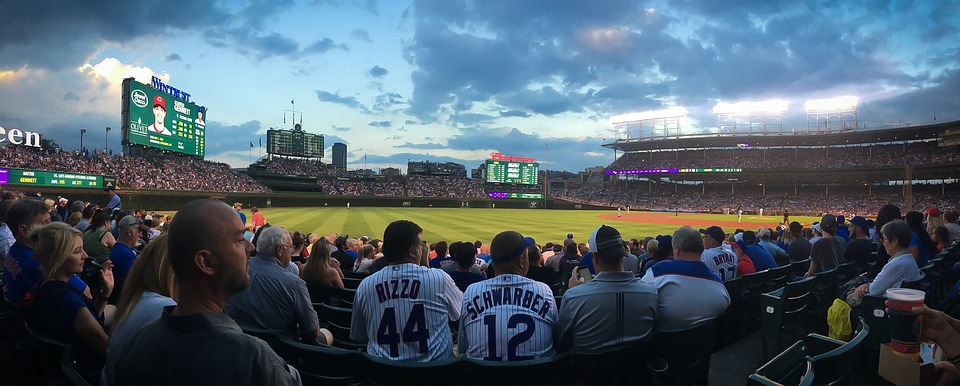It's hard to tell diehard Cubs fans something they don't know about the iconic home of their team, Wrigley Field. If you follow the Cubs day in and day out, you probably know that the stadium was first constructed in 1914 (you can prove it by wearing this shirt around), that it was once shared with the Chicago Bears, and maybe even that it was the last major league park to have stadium lights, but we think we can tell you a few things about Wrigley Field that you may not have known.
If these fun facts inspire you to visit the legendary home of the Cubs, don't forget to come prepared. Chicago's home for Cubs apparel, Sports World Chicago has everything Wrigley-themed that you could want, from high-quality prints of some of the park's most iconic scenes to hats that let you show your pride for your city, even when it gets cold outside.
1. The Cubs Weren't the First Occupants
Contrary to popular belief, Weeghman Field (later renamed after the Wrigley family) wasn't actually built for the Cubs. Charles Weeghman owned the Chicago Federals — nicknamed the "Chi Feds" and had the stadium built for that team. Coincidentally, the name was changed to the Chicago Whales, a team that folded after the 1915 season. In 2016, the Cubs moved in and the rest, as they say, is history.
2. The Apartment Phenomenon
The iconic apartment building bleachers actually weren't an official part of the Wrigley surroundings until the 1970s, when the building owners started to build bleachers on top of their buildings and charging admission for the public to watch the games from the roofs.
Luckily for all parties, the team negotiated with the building owners and allowed the practice to continue as long as they cut the ownership in on the arrangement.
3. What's the Real Home Run Distance?
The dimensions of Wrigley are pretty well-documented: 355 ft down the left field line, 353 ft. down the right field line, and 400 ft. to dead center. But, did you know that a player can hit a home run that travels less than that distance in the air? You probably do, but you've never thought about it. The fence that runs along the outfield wall (the basket) actually shortens the home run distance, shorter than the distance from home plate to the wall.
4. The Scoreboard and The Ivy: More in Common Than You Think
Did you know that two Wrigley icons, the scoreboard, and the ivy wall, were actually added in the same year? In 1937, which is actually a mix of Boston Ivy and Japanese Bittersweet, was planted by current GM Bill Veeck at the same time the iconic scoreboard was built. To remind yourself, why not take a look at the miniature replica scoreboard available from Sports World Chicago?
5. More than One Wrigley?
After putting his company's name on the Cubs stadium, William Wrigley built a stadium in Los Angeles in 1925, also called Wrigley Field. While the second Wrigley Field doesn't exist today, there is a tee-ball park called Little Wrigley Field, which is a scale model of the "friendly confines" still standing in Freeport, Illinois.

 World Series
World Series Hats
Hats Shirts
Shirts Jerseys
Jerseys